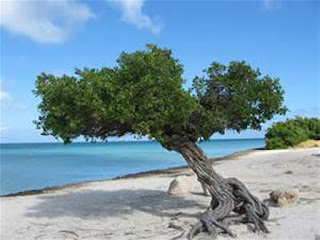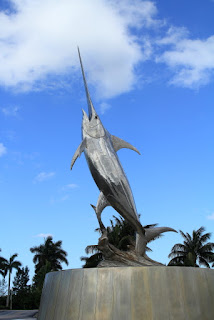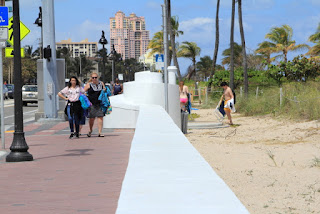The island of Aruba was discovered by Amerigo Vespucci and Alonso de Ojeda in 1499 and settled by the Dutch. After years of colonial rule, in 1986 Aruba became its own country, although it still remains a Dutch protecturate. Dutch is the official language; however, most people also speak English and the local shops are more than happy to accept American dollars or American credit cards. Aruba is the most visited island in the Dutch Caribbean.
We did not purchase a shore excursions for Aruba and had planned to just get off the ship and walk around Oranjestad (port city); but as soon as we stepped off the ship a local entrepreneur approached us and said that he would give us a guided tour of the Island for $20 in his private van (same as the $70 ship tour). How could we resist! The Island is only about 3 miles wide and 20 miles long, so it does not take a lot of time to see most of the island.
Much to my surprise, Aruba is a desert island -- similar to the desert of Baja, Mexico that contain a variety of different cacti! I do not recall seeing any Divi-Divi Trees in Baja, but they are plentiful on Aruba. (The trees do not grow straight up - they are bent over and always point southwesterly due to the constant trade winds.)
 |
| Photographer Unknown |
Next stop was the Aruba Aloe Balm Factory and Museum, where you learn how aloe is grown and transformed into world famous skin care products. They just also happened to have a retail outlet center that is more than happy to sell you their Aloe products! (They will even ship their products anywhere in the World for you!)
The California Lighthouse was built in 1910 and named after the California steamship that hit a reef and sank off the coast. They told us that on a clear day the views from the top of the Light are fantastic. However, the structure was closed for renovations, so we had to settle for a mango smoothie sold by locals in the parking lot.
On the way back to the ship we drove along the white sandy beaches and the beautiful crystal clear turquoise waters made me wish we had more time so that I could go skin diving. (A tourist publication states that Aruba has the "best beaches in the world.")
Our tour guide dropped us off by some little roadside shops (probably owned by his cousin) that were near the ship and then we walked around the old section of the town to see the impressive Dutch Colonial architecture. (The colorful buildings are often described as "Holland meets Disney Fantasia.")
At 4:00 PM sharp, the Captain pulled anchor and headed out to sea!

















































